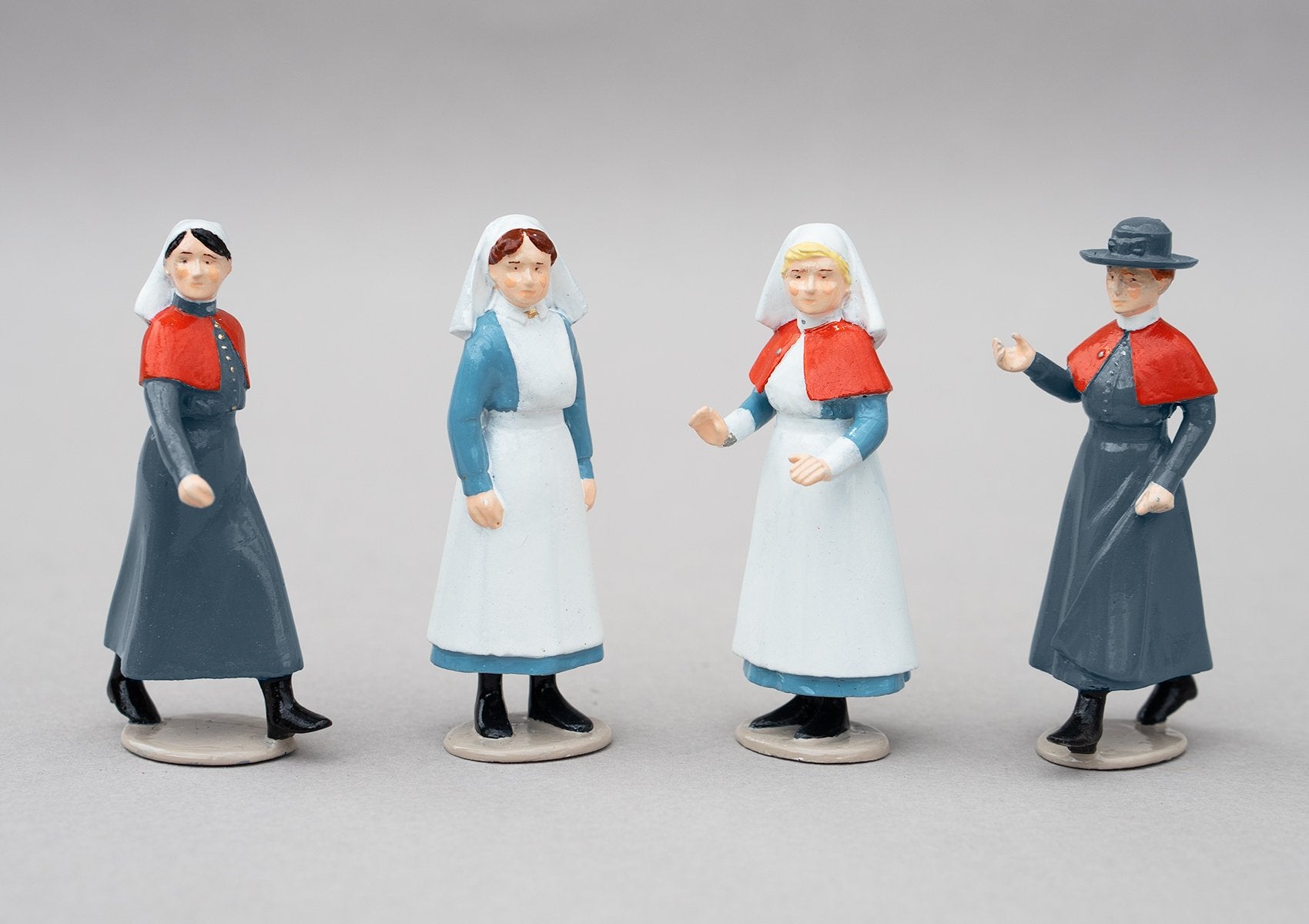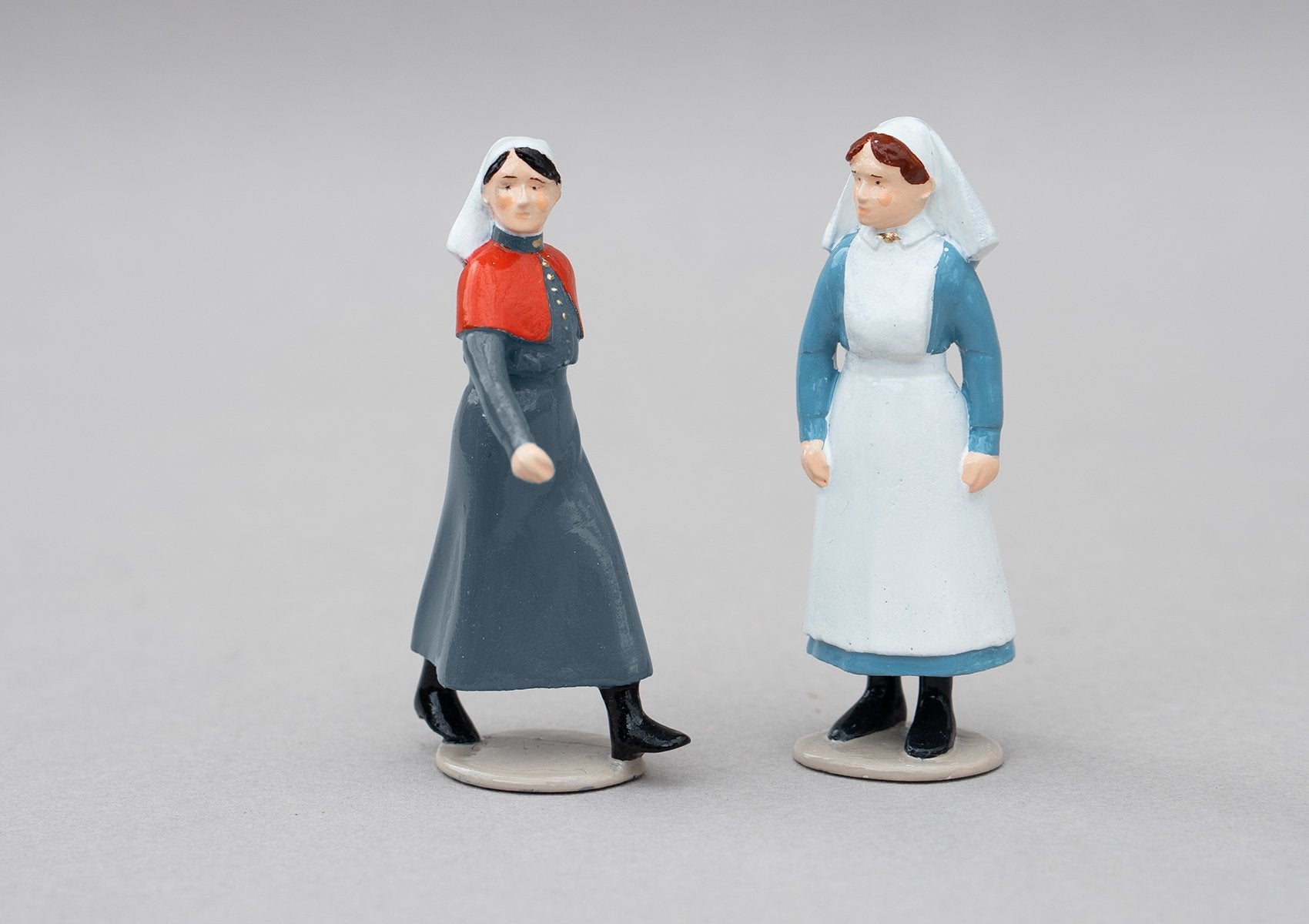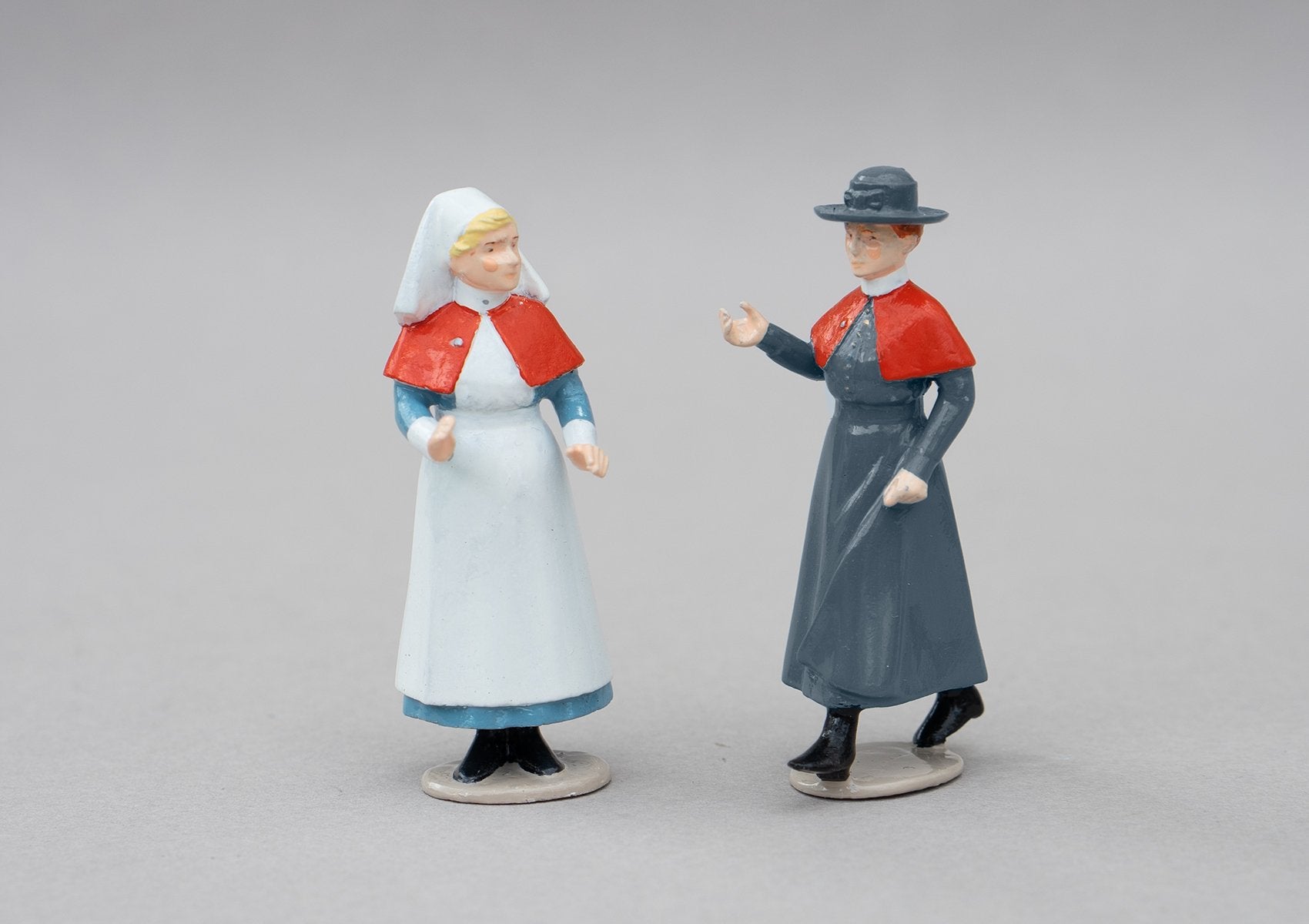



NZ12 Australian and New Zealand Army Nurses WW1
More than 3,000 Australian and 550 New Zealand nurses were on active service during the Great War 1914-1918. The Australian Army Nursing Service (AANS) was established in 1903, and the New Zealand Army Nursing Service (NZANS) was formed in 1915. Many nurses also served in other organisations, such as the Queen Alexandra's Imperial Military Nursing Service (QAIMNS), the Red Cross, or private hospitals.
Nurses worked in hospitals, on hospital ships and trains, or in casualty clearing stations near the front line, across all theatres of conflict throughout the war. Many were decorated for bravery. For most of the first cohorts sent overseas, their introduction to wartime nursing was in Egypt to support the ill-fated Gallipoli campaign. Hospital ships anchored off the Gallipoli coast were often under threat of shelling or torpedoes, overcrowded with casualties suffering wounds and disease, and lacking medical supplies and fresh water. Hospitals on nearby Greek islands were likewise lacking equipment and suffered from water shortages and poor sanitation.
On the Western Front, casualty clearing stations were close to the front lines, and the nurses' uniform amidst the mud and khaki would have been a welcome sight for many wounded soldiers. Casualties were treated and then evacuated to hospitals in France, England or back home.
Twenty-five Australian and sixteen New Zealand nurses died during their service in the war. The New Zealand number includes 10 who perished in the tragic sinking of the Marquette, a British transport ship torpedoed in the Aegean sea on 23 October 1915.
This set includes 4 figures, showing different configurations of the nurses’ outdoor and working uniforms.
Two figures represent the AANS with the “Rising Sun” badge of the Australian Commonwealth Military Forces at their collars, one walking in outdoor uniform with red cape and veil, one standing in the indoor working uniform.
Two figures represent NZANS nurses, with NZANS badge on the cape. One shows the indoor uniform complete with cape and removable arm cuffs, the other in the outdoor uniform and felt hat which photographs show was often substituted for more practical straw hats appropriate to the climate.
Choose options







